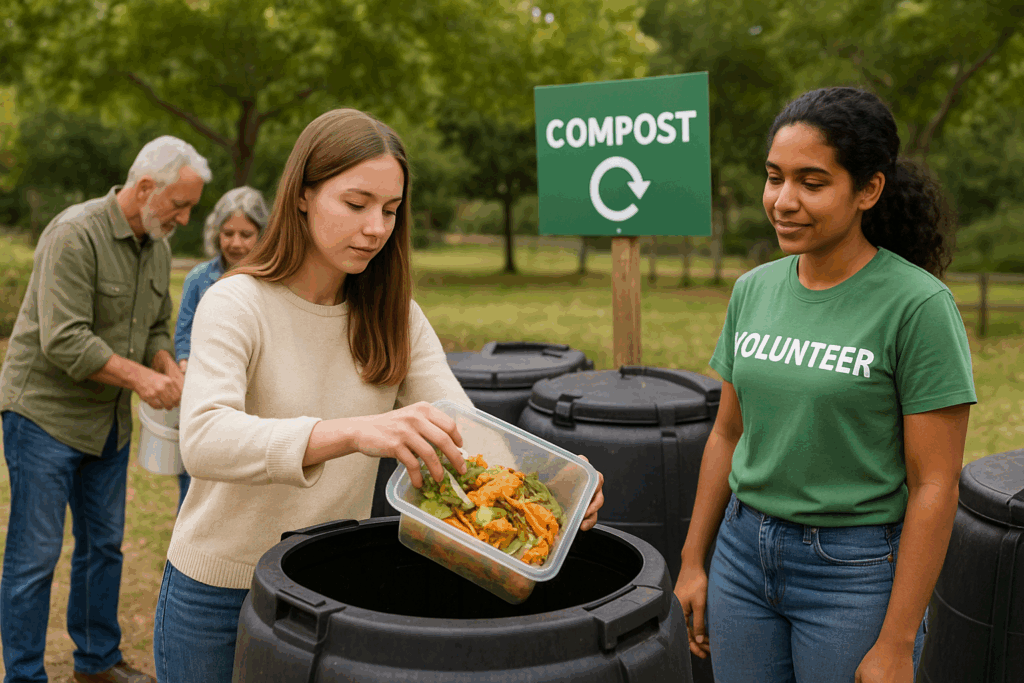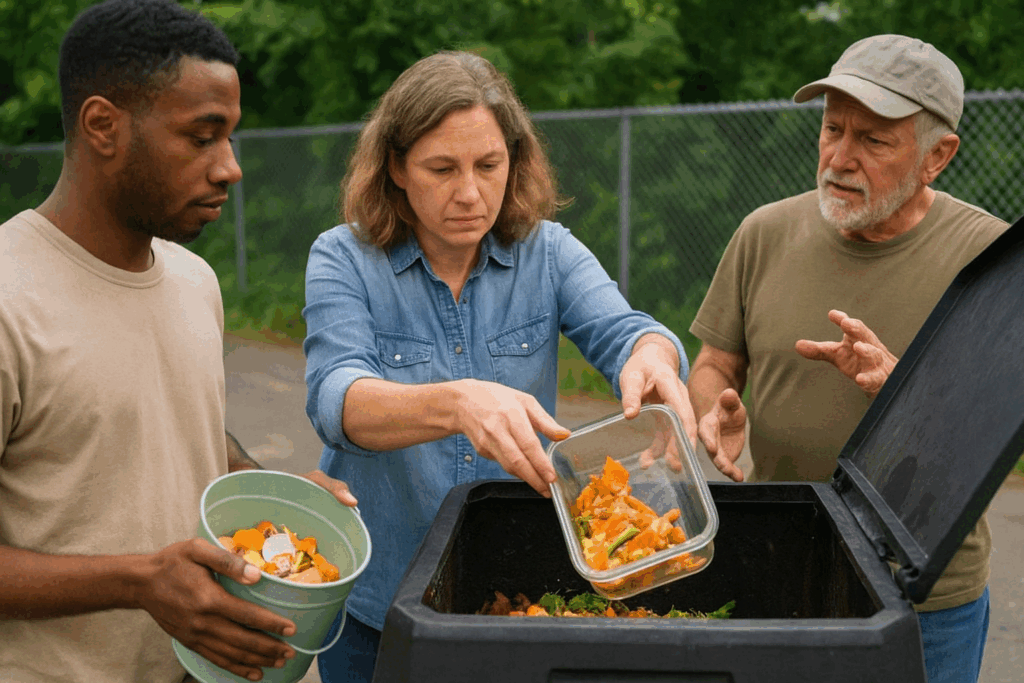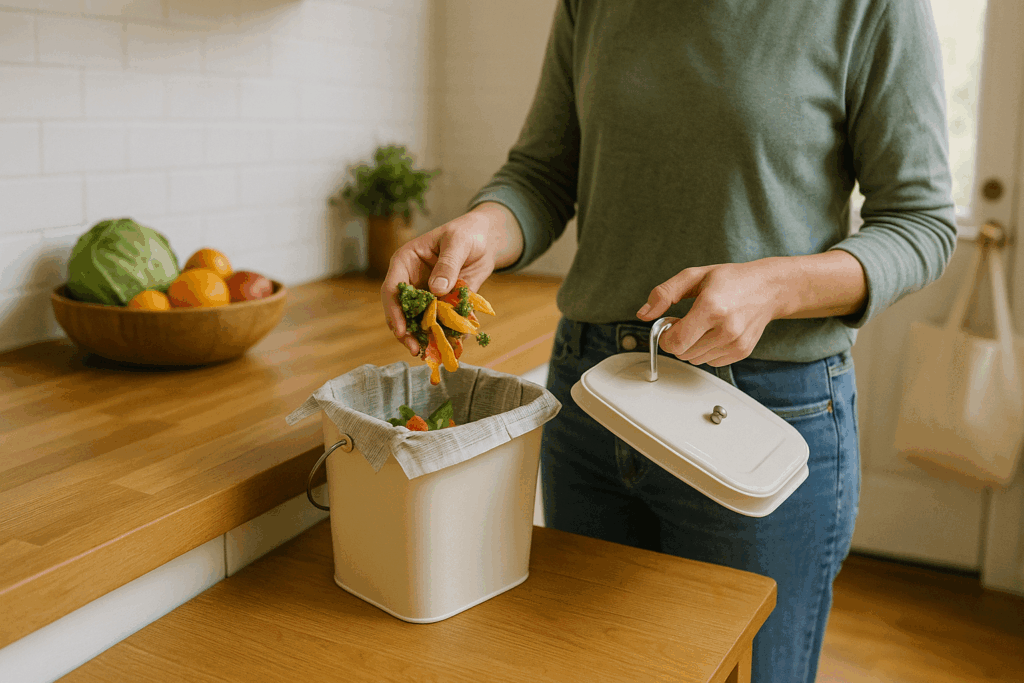Does tossing out food waste each week make you feel guilty? You’re not the only one.
Plenty of Australians want to help the planet but aren’t sure where their banana peels and coffee grounds should actually go. Those food scraps sitting in landfills create methane, a potent greenhouse gas that contributes to climate change.
There’s a better way. Community compost hubs take your food waste and create nutrient-rich soil instead of letting it rot and release harmful greenhouse gases. These shared drop-off sites handle all the hard work for you.
In this guide, we’ll walk you through how these hubs operate, what belongs in the bins, and the basic gear you need. You’ll start reducing food waste without the fuss. Stay with us to learn how it all works.
How Community Compost Hubs Work
Community compost hubs make recycling food waste simple. You drop off your scraps at local bins, and volunteers or council teams manage the composting process. In the end, those leftovers turn into nutrient-rich soil that helps nearby gardens thrive.

Let’s break down how this whole system genuinely works.
The Collection Process at Community Compost Sites
You’ll find designated bins or collection bays at the hub, usually in parks or community gardens. Typically, these hubs host weekend sessions, with volunteers on-site to monitor what goes in. In some cases, council-operated sites stay open on weekdays, and depending on the waste volume, collections take place weekly or fortnightly.
What Happens to Your Food Waste at These Sites
Once collected, your food scraps get layered with brown materials like dried leaves or cardboard, then mixed regularly to maintain oxygen flow. This aerobic process breaks down organic matter without producing methane. And the whole process takes three to six months from scraps to finished compost that gardeners can use.
How This Stops Methane Emissions
Composting stops methane emissions by maintaining oxygen throughout the breakdown process, and the difference this makes is significant. Each year, organic waste in Australian landfills generates about 13 million tonnes of greenhouse gas emissions, accounting for 2.5% of the country’s total emissions. This methane production happens because, without oxygen, food waste in a landfill creates the gas as it decays.
Now that you understand the process, the next step is making sure you’re putting the right items in.
Avoiding Contamination at Your Local Food Scraps Drop-Off
Let’s be honest here. Contamination is the real issue with community composting. Take this for instance: one wrong item can ruin an entire batch and create greenhouse gas problems instead of solving them. And the truth is, even well-meaning people accidentally mess things up.

Keep these guidelines in mind when sorting your scraps:
- Fruit and vegetable scraps are always safe: All cores, peels, stems, and wilted produce belong in compost bins without issue. You can also add coffee grounds with paper filters and eggshells, which break down faster when crushed. Together, these items add valuable nutrients to the finished compost.
- Bread and grains go in most community compost bins: When it comes to composting, dry pantry staples like stale bread, rice, pasta, and cereal are ideal. Even tea bags are cut once you remove their metal staples. And to finish off your compost mix, you can toss in plain crackers and baked goods for good measure. Just don’t include foods drenched in oil or heavy sauce.
- Skip meat, dairy, and oily foods: These items attract unwanted pests like rats and possums to the site. They impede decomposition rates and generate unpleasant odours, too. Through our practical knowledge, we’ve found that dairy products cause the most contamination issues at community hubs, so most sites prohibit these materials entirely.
- Watch out for sneaky non-compostables: Avoid plastic-lined coffee cups, even the ones labelled “compostable,” since most require industrial facilities to break down. The same goes for pet waste and treated timber, which ruin the whole batch. Look, we’ve all been tempted to toss in a “compostable” cup anyway, but it’s worth checking your local hub’s specific rules before dropping off anything questionable.
Follow these basics, and you’ll keep your local hub running smoothly while doing your part to reduce waste.
Starter Gear for the Food Waste Challenge
You might be wondering what gear you need to join the food waste challenge. Honestly, just a few basic items make collecting scraps simple and mess-free. You probably already have most of them at home.

Here’s how to set up your collection system in three simple steps:
- Choose a Kitchen Container: Benchtop bins with carbon filters do a great job of controlling odours. If you’d rather not spend money, old ice cream containers make a handy alternative. For even better results, freezing your scraps between drop-offs completely stops the smell. Believe it or not, your nose will thank you.
- Line It for Easy Cleaning: You can use newspaper, compostable bags, or nothing at all for lining. Whichever you choose, liners mean less washing between trips to the hub. Our experience shows that newspapers work just as well as fancy bags and cost nothing.
- Plan Your Drop-Off Routine: A weekly schedule works nicely for most households and avoids overflow problems. The trick is keeping a sealed bucket somewhere convenient, like your car boot or near the front door. Many people fold it into their Sunday morning routine, dropping off scraps before they head to the farmers’ market.
With these basics in place, you’re ready to start cutting down your food waste one bucket at a time.
Join the Community Composting Movement
Food waste is one of Australia’s biggest environmental challenges, with millions of tonnes ending up in landfill each year and producing harmful methane emissions. The good news is that community compost hubs offer a practical solution that anyone can use to reduce their environmental impact.
We’ve covered how these hubs work, what you can safely compost, and the simple gear needed to get started. You now understand collection processes, contamination guidelines, and everything required to begin reducing your food waste while supporting your local composting community.
Ready to start composting? Visit Eco4theWorld to find your nearest community compost hub and begin this week. Your food scraps belong in soil, not landfill.
